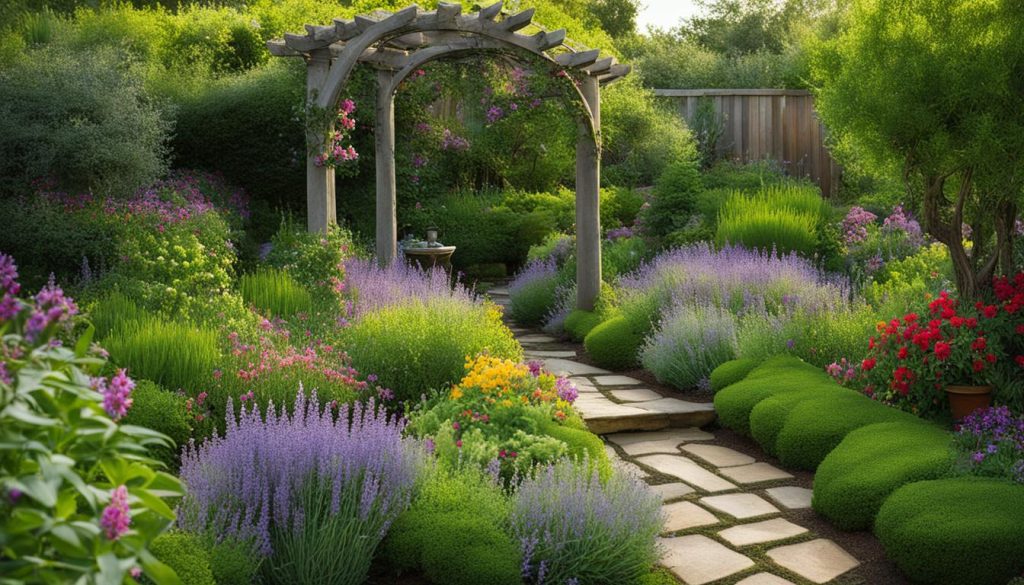Welcome to our guide on creating a fragrant garden! There’s nothing quite like the enticing aroma of fresh flowers and aromatic plants wafting through the air in your backyard. With our expert advice on fragrant garden landscaping, you’ll be able to create a sensory delight for yourself and your loved ones.
The first step in creating a fragrant garden is selecting the right aromatic plants. Whether you prefer sweet and floral scents or more earthy and herbal aromas, there are plenty of options to choose from. From lavender to jasmine, there are fragrant plants that thrive in every climate and soil type.
With the right plants in place, you can start planning your fragrant garden’s layout. Designing your garden with scent in mind is essential to ensure that the fragrances are evenly distributed throughout your space. Our guide will show you how to create an aesthetically pleasing layout that maximizes scent distribution and ensures a harmonious blend of fragrances.
By caring for your aromatic plants correctly, you can keep your fragrant garden thriving all year round. Regular maintenance tasks like watering, pruning, and fertilizing are essential to ensure that your plants are healthy and produce the strongest scents possible.
In our guide, we’ll also show you how to pair different aromatic plants to create captivating scent combinations. And, if you’re looking to bring the fragrance inside your home, we’ve got you covered. We’ll explore the art of harvesting fragrant plants and creating aromatic arrangements and DIY projects for your indoor decor.
Join us as we explore the art of fragrant garden landscaping and discover how to create a truly delightful sensory experience in your own backyard.
The Power of Scent: Benefits of Fragrant Gardens
At our core, we are sensory beings. Our senses have a unique way of transporting us to a different time and place, bringing back cherished memories or creating new ones. Fragrant gardens offer a complete sensory experience, touching not only our sense of smell but also our sight, touch, and sometimes even taste.
Research shows that scents have the power to influence our mood, emotions, and even physical well-being. Aromatherapy is based on the notion that certain scents can have a calming or energizing effect on the body and mind. Fragrant gardens are a natural extension of this, allowing us to create a sensory experience tailored to our own preferences.
One of the most significant benefits of fragrant gardens is their ability to reduce stress and anxiety. The mere act of spending time in nature has been shown to have a calming effect on the body, and the addition of fragrant plants only enhances this effect. Lavender, for example, has long been known for its relaxing properties and is often used in aromatherapy to promote restful sleep.
Fragrant gardens can also have a positive impact on our mood. The smell of flowers and herbs can trigger the release of endorphins, the body’s natural feel-good chemicals. Research has shown that people who spend time in fragrant gardens report feeling happier and more relaxed.
In addition to their mood-boosting properties, fragrant gardens can also benefit our physical health. Essential oils extracted from fragrant plants have been shown to have anti-inflammatory and antimicrobial properties. Some fragrant plants, like mint and thyme, have even been used for centuries as natural remedies for colds and other illnesses.
Overall, the benefits of fragrant gardens are many. They offer a sensory experience that can reduce stress, boost mood, and promote physical well-being. And let’s not forget about the sheer beauty of a fragrant garden! The vibrant colors and textures of fragrant plants are a feast for the eyes and a delight to the senses.
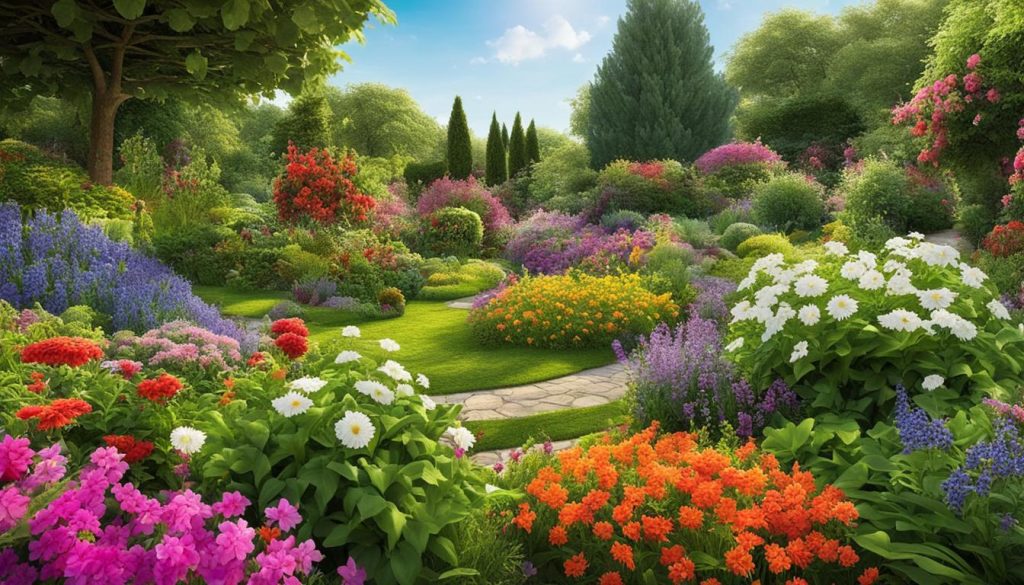
Adding fragrant plants to your garden is a simple, yet powerful way to improve your quality of life. Whether you’re looking to create a peaceful retreat or a vibrant gathering place, fragrant gardens are a wonderful addition to any outdoor space. So, why not take advantage of the many benefits of fragrant gardens and create your own sensory oasis?
Choosing the Right Plants for Fragrance
Now that we understand the benefits of fragrant gardens, let’s explore how to choose the right plants to create a sensory oasis in your backyard. When selecting plants for fragrance, it’s important to consider both the scent and the plant’s compatibility with your garden’s climate and soil.
Some popular fragrant plants include lavender, jasmine, lilac, and gardenia. Lavender is a hardy, drought-resistant herb that adds a sweet, calming scent to the air. Jasmine, with its heady floral aroma, is ideal for warm, humid climates. Lilac, known for its delicate, powdery scent, thrives in cooler temperatures and requires well-drained soil. Gardenias, with their creamy, sweet fragrance, are perfect for warmer climates and moist, well-drained soil.
When selecting aromatic plants, consider the plant’s size, growth habit, and visual appeal. Some aromatic plants tend to grow quite tall and can block out sunlight to other plants. You can also choose plants with a variety of bloom times to ensure year-round fragrance in your garden.
It’s important to note that certain aromatic plants can be toxic to pets, so be sure to research your selection before making your final decision.
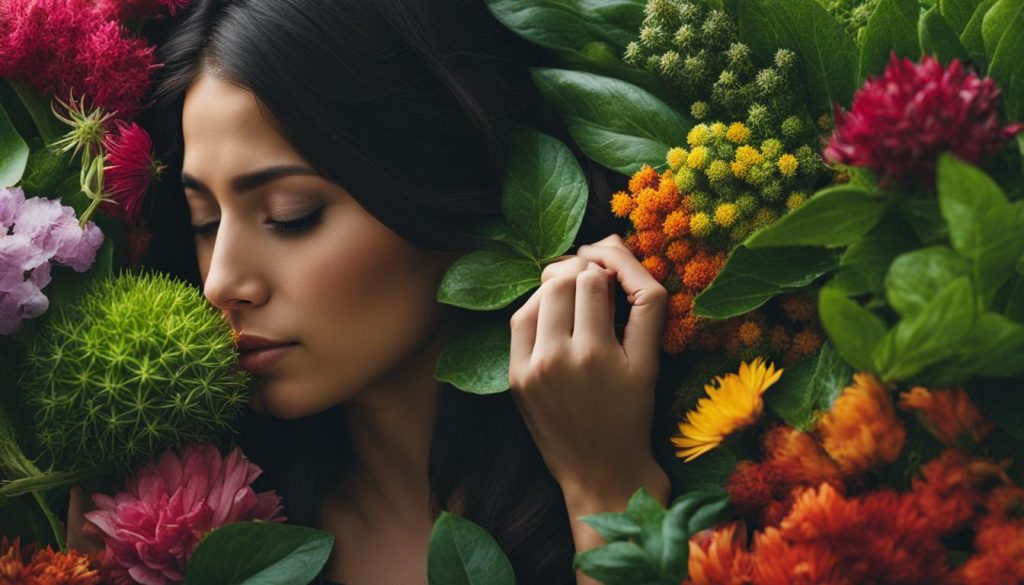
- Consider both the scent and the plant’s compatibility with your garden’s climate.
- Popular fragrant plants include lavender, jasmine, lilac, and gardenia.
- Consider the plant’s size, growth habit, and visual appeal.
- Choose plants with a variety of bloom times for year-round fragrance.
- Research your selection to ensure it’s safe for pets.
Designing Your Fragrant Garden
Now that you have chosen the perfect fragrant plants for your garden, it’s time to start designing your fragrant garden. A well-designed garden will not only enhance the aesthetic appeal of your outdoor space but also ensure maximum scent distribution.
Consider Your Garden Layout
Your garden layout should be functional and visually appealing. Consider the size of your garden, the types of plants you have selected, and the amount of sunlight and shade each area of your garden receives.
When designing your garden, ensure that there is enough space between plants to allow for proper growth, and take into account the height, texture, and color of each plant. You may also want to consider adding visual interest by incorporating different levels, such as raised garden beds or hanging planters.
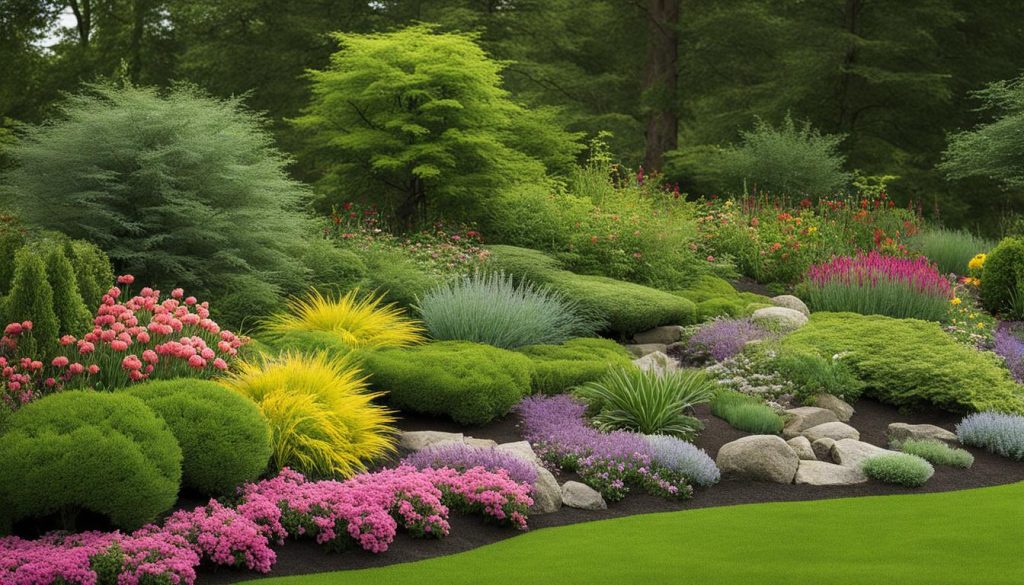
Create a Scent Plan
When selecting and arranging your fragrant plants, consider how their scents will interact with each other. Some scents complement each other, while others can clash. Research which fragrances pair well together and plan your planting accordingly.
Additionally, consider the timing of each plant’s bloom cycle. You want to ensure that you have a consistent supply of scents throughout the growing season.
Add Hardscaping Elements
Incorporating hardscaping elements into your garden design can add interest and functionality to your fragrant garden. Consider adding pathways, seating areas, or a water feature to create a relaxing atmosphere to enjoy your garden’s fragrance.
Make sure to choose hardscaping elements that complement your garden’s overall design and don’t clash with the fragrant plants.
Maintain Your Fragrant Garden
To ensure that your fragrant garden continues to thrive and smell delightful, proper maintenance is essential. Regular watering and fertilization are crucial, as well as pruning to encourage healthy growth and prevent overcrowding.
Make sure to also remove any dead or decaying plant materials, as they can attract pests and detract from your garden’s overall appearance and scent.
With proper design and maintenance, your fragrant garden can become a sensory paradise, providing a delightful and uplifting experience every time you step outside.
Caring for Fragrant Plants
Proper plant care is essential for keeping your fragrant garden healthy and thriving. By following a few simple maintenance tasks, you can ensure your aromatic plants continue to fill the air with delightful scents all season long.
Watering
Adequate watering is vital for the health of your plants. Be sure to water them regularly, especially during hot and dry spells. It’s best to water in the early morning or late afternoon to prevent water loss due to evaporation. Avoid overwatering, as this can lead to root rot and other health issues.
Fertilization
Fertilizing your fragrant plants ensures they have the necessary nutrients to grow and produce optimal scents. Use a balanced fertilizer, and apply it according to the manufacturer’s instructions. Some aromatic plants may require specific fertilizers, so be sure to research your plants’ specific needs.
Pruning
Pruning helps control the size and shape of your plants and promotes healthy growth. Be sure to prune your fragrant plants regularly, removing any dead or damaged branches. Pruning also encourages new growth and can enhance the intensity of the scent.
Pest Control
Pests can damage your fragrant garden and affect the scent of your plants. Keep an eye out for common garden pests, such as aphids, mites, and whiteflies. Use natural pest control methods, such as spraying with neem oil or introducing beneficial insects like ladybugs, to keep pests at bay.
Winter Care
Some fragrant plants require special care during the winter months. Research your plants’ specific needs and protect them from harsh winter conditions, such as frost, snow, and ice. Consider covering your plants with burlap or other protective materials to keep them healthy until the spring arrives.
By following these essential plant care tips, you can ensure your fragrant garden stays healthy and continues to fill the air with delightful scents for years to come.
Combining Fragrances: Creating Scent Combinations
Creating scent combinations is the ultimate art of fragrant garden landscaping. It’s like composing music, where different notes blend together to create a harmonious melody. The same principle applies here – by pairing fragrances, you can create captivating scent combinations that add depth and complexity to your fragrant garden.
Pairing Aromatic Plants
When it comes to pairing fragrances, the key is to choose plants that complement each other. Start by selecting a dominant fragrance, which will set the tone for your scent combination. Then, choose supporting fragrances that enhance and balance the dominant scent.
For example, if you have a rose plant with a sweet, floral scent, you can pair it with lavender, which has a more herbaceous aroma. The result is a lovely combination of sweet and herbaceous notes.
You can also create contrasts by pairing fragrances that have opposite characteristics. For instance, you can pair a spicy scented plant with a sweet one. This creates an exciting fragrance blend that’s both unexpected and delightful.
Blending Fragrant Oils
You can also create unique scent combinations by blending fragrant oils. This technique is especially useful when you want to create a specific scent profile that’s not possible with plants alone.
To start, choose essential oils that complement each other. For instance, you can blend lavender with vanilla for a relaxing, spa-like scent. Or, you can mix peppermint and lemon for an invigorating, energizing scent.
Once you’ve chosen your oils, mix them in equal parts and store them in a dark, airtight container. You can use this blend to scent your home or add it to your diffuser for a calming aroma.
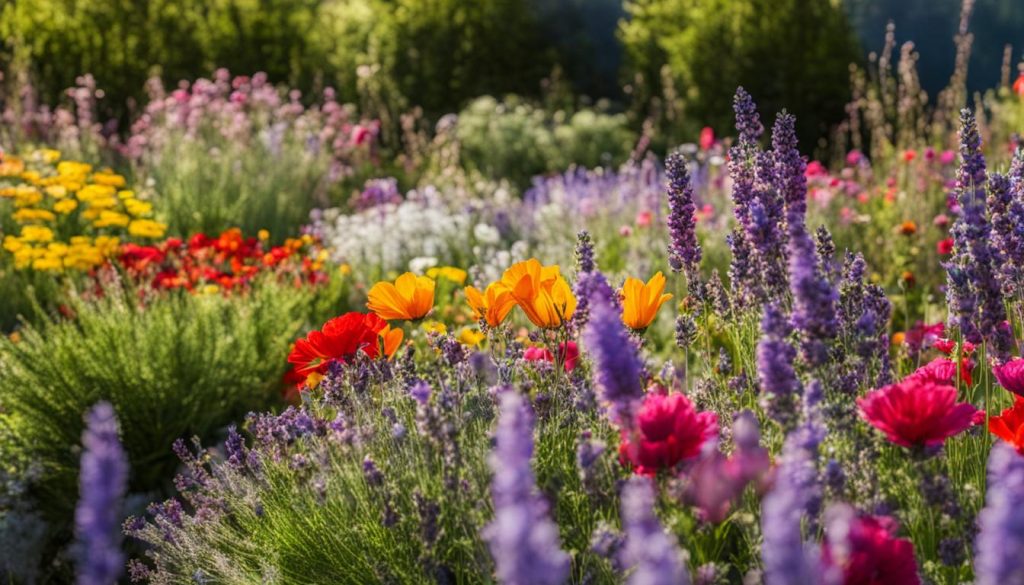
Creating scent combinations is a fun and rewarding process that takes your fragrant garden to the next level. Whether you choose to pair plants or blend oils, the possibilities are endless. So let your creativity run wild and experiment with different scents until you find your signature fragrance blend.
Bringing Fragrance Inside: Harvesting and DIY Projects
While fragrant gardens are a treat for the senses, you can also enjoy the delightful aromas inside your home. Here are some tips on how to bring fragrance indoors:
Harvesting Techniques
Harvesting your aromatic plants is a great way to enjoy their scents indoors. Here are some tips to get you started:
- Harvest your plants early in the morning when their essential oils are at their peak.
- Clip off a few sprigs and place them in a vase or jar with water.
- Place the vase in a sunny spot, and enjoy the fragrance as it fills the room.
DIY Projects
If you’re feeling crafty, there are plenty of DIY projects that incorporate fragrant elements into your indoor decor. Here are a few ideas:
- Create a fragrant wreath using dried flowers and herbs.
- Make your own potpourri using dried flower petals, spices, and essential oils.
- Fill a bowl with dried lavender buds and place it in your bedroom for a soothing scent.
With these tips, you can bring the beauty and fragrance of your garden inside your home. Experiment with different harvesting techniques and DIY projects to find the perfect way to incorporate fragrant elements into your indoor decor.
Discover the excellence of Landscaping Vaughan for all your landscaping needs! Our committed team is prepared to assist you in crafting and upkeeping a remarkable outdoor space. Whether you seek innovative design ideas, meticulous lawn maintenance, or expert hardscaping solutions, we’ve got you covered. Reach out to us today, and let’s embark on the journey of transforming your outdoor environment into a beautiful and functional masterpiece!

